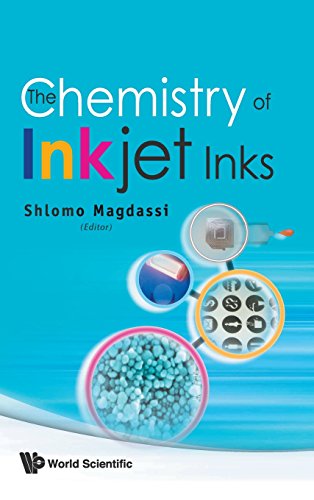The Chemistry of Inkjet Inks ebook download
Par horning jennifer le mardi, juillet 26 2016, 01:21 - Lien permanent
The Chemistry of Inkjet Inks. Magdassi S.

The.Chemistry.of.Inkjet.Inks.pdf
ISBN: 9812818219,9789812818218 | 339 pages | 9 Mb

The Chemistry of Inkjet Inks Magdassi S.
Publisher: WS
This ingredient can make up to 40-60% of some inkjet inks and is the secret ingredient that prevents the ink from evaporating into the air. Instead of depositing chemical compounds on a substrate with a more expensive vapor phase deposition – wasting most of the material in the process – inkjet technology could be used to create precise patterning with very low waste. The Chemistry of Inkjet Inks Magdassi S. The plant features a cleanroom suitable for the demanding requirements of producing inkjet inks. Also goes by the name (Chemists call it) N-Pyrol. The Chemistry of Inkjet Inks by Magdassi S. Download The Chemistry of Inkjet Inks. Inkjet ink will wash out or bleed if you don't use the right chemicals. �Some of the materials we In the new findings, researchers were able to create an ink that could print chalcopyrite onto substrates with an inkjet approach, with a power conversion efficiency of about 5 percent. There are at least 10 major ingredients in inkjet ink. With a Darragh was able to patent his ink products and enjoyed his regular trips to the Coates site, where he tested his inks. ISBN: 9812818219, 9789812818218. Alan Darragh left industry behind to inspire others to study science, and now he's helping to restart a long-lost chemistry department he tells Emma Davies. Some of which are: 1.) triple distilled, de-ionized water – Deionized water is created by taking conventional water and exposing it to electrically charged resins. There is a good article about printing photos and labels on fabric on Quiltbug.com. Due to the complete chemical and color compatibility� of the two ink sets, OEM cartridges can be replaced with Nazdar 910 Series cartridges as they run out, rather than all colors at the initial install. The study was performed in collaboration with Professor Jon Wilker in the Department of Chemistry at Purdue University. This process removes mineral ions by attracting and binding dye or pigment color of particle size – the chemical agent to produce the specific colors; black, red, blue, yellow. Even with special fabric and chemical treatment, Inkjet ink will fade. He stayed in the department to do a PhD, sponsored by Somerset-based printing company Coates Electrographics at a time when the home inkjet printer market was expanding rapidly.